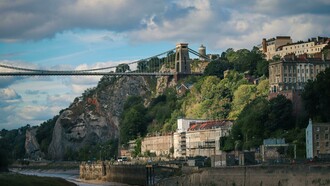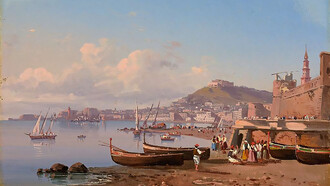My own Canterbury tale began with a single goal in mind: to visit the Cathedral and discover more about Saint Thomas Becket's homicide. Arriving in a town outside of London felt pleasing. There was no longer any sense of urgency. So, my good mood was set for the rest of the day.
In school, we were all taught about the Canterbury Tales. However, I believe Canterbury's Cathedral is underappreciated in terms of its historic significance. It all began in 597, when Pope Gregory the Great sent a monk named Augustine to England to establish the Roman Catholic Church. That's how one of the world's oldest and most famous cathedrals was founded. However, the story is bloodier and more complicated than many realise, such as when an Archbishop was murdered in cold blood by four knights on King Henry II's orders within the walls of the Cathedral.
Indeed, the walk from the station felt like a long one, but it was accompanied by captivating views of very longstanding buildings. Halfway through, I came across a house that has probably been there since the Middle Ages; it is tinier than any house I've ever seen. The door itself was probably as tall as myself; for the record, I am 5'1". Its doorknobs, on the other hand, were engraved with faces of gothic gargoyles that stared me down as a tourist. After that, I returned to the present day and continued walking. On my way there, I could glimpse a section of the Cathedral's face.
Canterbury's Cathedral has attracted hundreds of tourists in recent times due to its iconic architecture, hallowed atmosphere, and beautiful artwork. The contrast of a Nero or Starbucks with a Medieval structure is what really gets my attention. Canterbury is best characterised by its blend of modern and historic features. Walking about, I can't help but look at each house's facade in wonder.
The statue of Geoffrey Chaucer, the author of the original version of The Canterbury Tales, jumped out at me at the most inopportune time. A wooden stick in one hand and the handwritten text of the tales in the other, he appears to be suited for the period. His presence heightened the sense of adventure.
As the wise person that I am, I decided to go on Easter Monday. Of course, there was a huge queue for the ticket booth. I arrived at the Cathedral's entrance after a 30-minute wait. To my dismay, there was scaffolding all over the place, making it impossible to fully appreciate the Cathedral's edifice and style. My body froze as I contemplated such a magnificent complex but with a cryptic, chaotic past. The interior had the atmosphere of any church, with a hoary incense smell and a deadly silence. Any powerful movements can be heard from end to end.
At first, I was unaware of the Cathedral's immensity when I set out to explore it. The Crypts, where priests of the Early Middle Ages attended worship, were my first point of interest. Only the light of the candles and the sun shining through the mosaics could be seen. Again, the contrast between the ancient and the modern became apparent as I had the sudden realisation that the Crypts were hosting a spectacular modern art exhibition.
What is atypical about this cathedral is that its story goes beyond religion; every single mosaic, tomb and altar has a distinctive backstory. After wondering around and failing to find the location of St. Thomas Becket's murder, I asked one of the volunteers named Will for help, he guided me to the location which was easily missed by the eye. "The Martyrdom it is called," he clarified. A simple white marble altar stood nearby, holding two miniature golden taper candle holders. On top, a modern sculpture attached to the wall carrying four rusted swords shaped like a cross. Will explained, "As you can see, the shadow symbolises a crucifixion."
I enquired as to who was responsible.
"King Henry II sent for his head. "Four volunteer knights did it, thinking they were doing themselves a favour, but all of them were sent to the Crusades and never came back," Will narrated.
As I approached the altar, I noticed the name Thomas craved in red letters in the rocky ground. And here ended my pilgrimage at the sight of his name.















